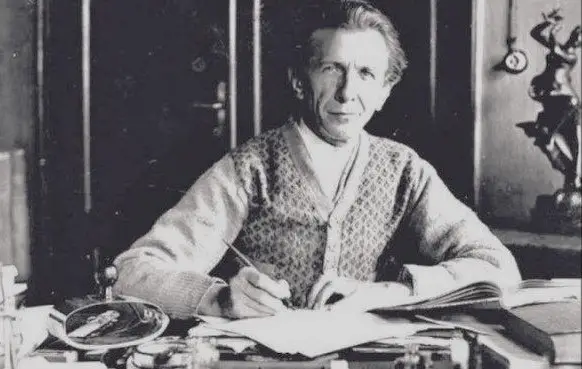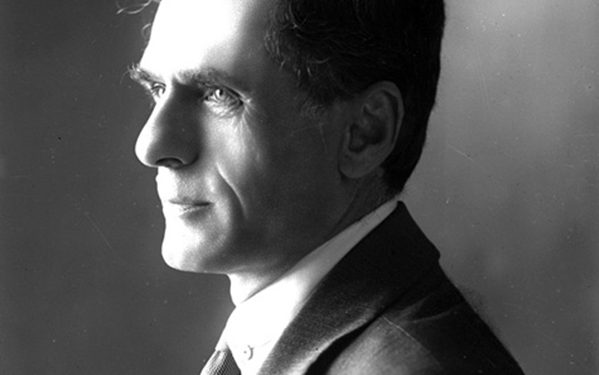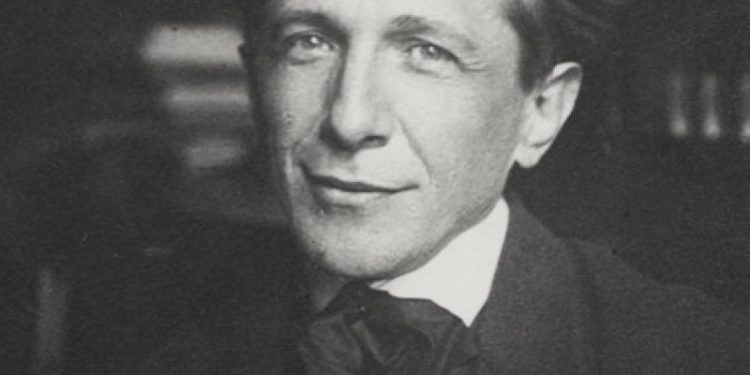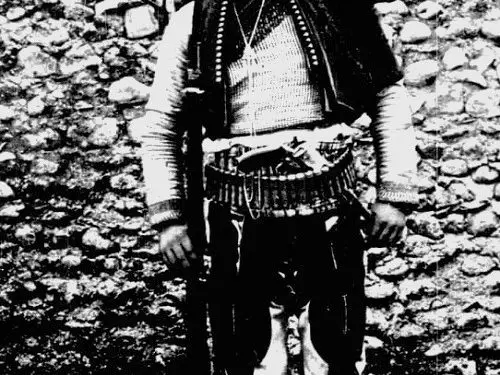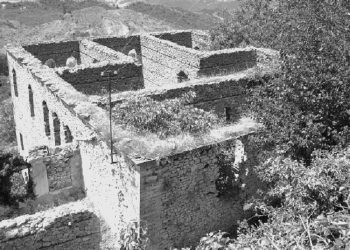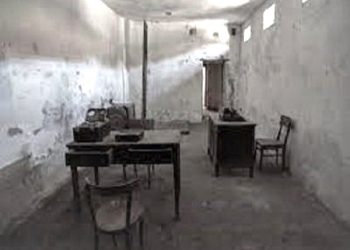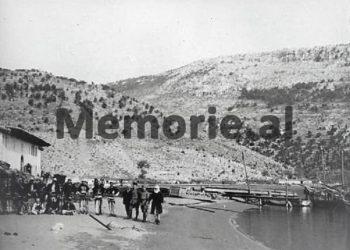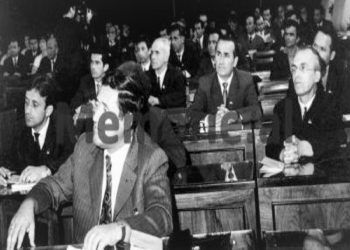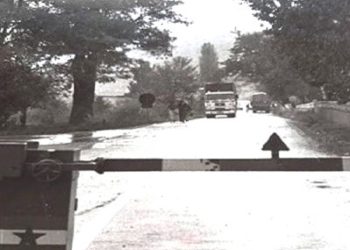– How was discovered in Albania, the subject of the third volume of “Acta Albaniae”, by Milan Shuflai, which has been discussed for years –
Memorie.al / After the testimonies and documents that illustrate the events of Albania during the Middle Ages, from 334 – 1406, now Albanian historiography, there is also the subject of the third volume that includes the time of the great weather of Skënderbeu. Milan Shuflai was born in Lepogllav, Croatia on November 9, 1879. After finishing high school with honors, he continued his studies in historical sciences at the University of Zagreb. As early as university, he read the original historical works written in ancient Greek, Latin, Italian, Spanish, German, English, French or Hungarian. He basically knew all Slavic languages, and later learned Hebrew, Albanian and Sanskrit. 24 years old, asserts himself as a researcher of European proportions. After his university studies, he collaborated with Shmiciklas, for the drafting of the “Codex diplomaticus” corpus.
During the year 1902-1903, he works at the Institute of Historical Studies in Vienna, where he publishes “Private Documents of Dalmatia”. From 1904-1908, he worked at the People’s Museum of Budapest. The monumental work of Milan Shuflai remains “Acta et diplomata res Albaniae, mediae aetatis illustrantia”, which means evidence and documents that illustrate the events of Albania in medieval times. February; this two-volume work on the history of Albania is known as “Acta Albaniae”. The first volume was published in Vienna in 1913, while the second volume, in 1918, was also published in Vienna. They talk about Albania in the years 334-1406 and were written in collaboration with researchers K. Jirecek and L. Talocin.
In 1916 and after, he published: “Church situation in Albania”, “Borders of Albania in the Middle Ages”, “Medieval Albania”, “Hungarian-Albanian connection in the Middle Ages”, “Political Fates of the Durrës theme”, “Biology of tribes of the Albanian people”, etc. After the Second World War, with the creation of the Slavic state, which, apart from Serbia, also includes Slovenia and Croatia, according to the historian Milan Shuflai, the persecutions began. Arrested, imprisoned and sentenced to 3 and a half years in prison, as a member of the Croatian committee, formed in Graz, Austria. The Serbs could not easily forget the arguments and analyzes he had made about the antiquity of the Albanians.
After leaving Mitrovica prison, he publishes “National Mists”, “Cadastres of Shkodra”, “Ethnic Cyclones in the Balkans”, “State Cores, Albania in Antiquity”, “Castles and Medieval Cities of Albania”, “Serbs and Albanians”, ” The national mosaic in Macedonia”, “Cities and villages in the Middle Ages”, etc., etc., almost 3 thousand titles of books and study articles on Albania, Serbia, Croatia, Bulgaria, Romania, Hungary, Montenegro, Italy, Slovenia, Austria. Milan Shuflai also published under the pseudonym Alba Limi. With this name, he published the historical novel “Constantin Balshaj”. As can be seen from this short bibliography, Shuflai is one of the greatest personalities of science and Albanianology. He is its most dignified representative.
There is no other albanologist who can compete with Shuflai for the medieval period. With documents and facts, he argues the first beginnings of the civic life of Albania, long before the Slavs came. He argued our ancestry. Davariti cleared the mists of time and clarified the Illyrian, Hellenic, Roman and Byzantine times of Albania. He and he alone presented the complex foundations on which our national and state life is built. To conduct such studies, it is not easy. The sources of information are very remote, almost inaccessible. But even when you find them, it is impossible to decipher them because people in that world did not speak and write as we speak and write today.
Think, what a great knowledge, what a colossal work, what a long time and how much time it might have taken Shufla, to reconstruct without any flaw, the mosaic of today’s Albanians who were previously called Arbers and even earlier, Illyrians . If we remove Shuflai from our historiography, then what is left?! Our lineage would be doubtful, incomplete, truncated. Data for this period have been presented by other researchers, such as; Farlati, Valentini, Dyselje, etc., but Shuflai’s role and precision cannot be compared to any. He is indisputable. All those who want to talk about the history of Albania should definitely go through the source of Shuflai. He was treacherously killed in Zagreb, on February 18, 1931, one month after he had visited Albania.
How was Milan Shuflai killed!?
Not only the life, but also the death of Shuflai, has a direct connection with Albania. The one who had dedicated his whole life to the history of Albania, had no way to leave this world, except because of it. In December 1930, King Zog invited Milan Shufla to visit Albania. The king was well aware of Shuflai’s contribution to the drafting of the history of the Balkans, therefore he wanted Shuflai to write the history of Albania as well. And Shuflai, who admired this small people with ancient history so much, came to Tirana. Stayed at the “Continental” hotel and stayed for 8 days. On one of these days, he gave a speech to Albanian parliamentarians. There he mentioned the biology of the Albanian tribe, as part of a project for the overall history of Albania. In the parliament he spoke in Albanian and for that he was applauded twice.
A week after he left Albania for Zagreb, he received the first threat. A paper envelope asking him to give up further studies and writing. At the end of the note: “National Organization, for the King and the Fatherland”. Of course, now he had more work than ever. He had just returned from Albania, where he was obliged to finish the third volume of “Acta Albaniae”. The chair of history for Southeast Europe at the University of Budapest, you had offered him a job. But King Alexander did not let him go outside the borders of Serbia.
Meanwhile, the Academy of Sciences of Vienna had proposed to finish the work, for the volumes left half. 52-year-old Milan Shuflai can’t be scared by a paper threat. To withdraw? It was out of the question! So until the evening of February 18. As he was returning home, he entered an alley and… (According to later claims) three men stopped him in the dark, shot him in the head with a crowbar and sped away. He falls unconscious on the ground and drowned in blood, he is found by passers-by, who immediately take him to the hospital. But it is late. He died that very night, without saying a word, without leaving a legacy!
Authorities banned the publication of any news related to his death. But Shuflai was not an ordinary individual. He had already returned to the institution. Foreign journalists immediately gave the sensational news: “Milan Shuflai, while passing by on his way home, was hit in the dark by unknown persons and then died in the hospital.” They called it; “big crime”, they don’t hesitate to say; “organized by the Serbian police, who stole all his documents and manuscripts from the house”. After this announcement, European intellectuals, including Einstein and Heinrich, condemned the macabre murder.
The Croatian Academy of Sciences issued a statement condemning the murder and asking the questions: How was our scholar, researcher and professor killed? Was this an attack to rob him, or a premeditated political murder? Was Shuflai hit, just to scare him, that’s all, or did he have to be finally destroyed? If so, then why a 52-year-old man likes Milan Shuflai should be physically liquidated? What balance did he break? Yes! Milan Shuflai was seriously mistaken. He had left the Slavic school. The Serbian renaissance called the Serbian people a missionary people, a people who stand above others. The southern Slavs had come to this region of Europe to emancipate the wild shepherds of the Balkans.
This philosophy, which exists to this day, contradicted Shufla’s European spirit. This is why Shufla’s death, on that cold winter night, remained mysterious until the winter of 1940! It was illuminated only after this year, when before the Court of Zagreb, they were brought out as defendants; Branko Zverker, Lubomir Belloshević and Stevo Vecernica. They stated that the decision to liquidate Milan Shuflai was taken after he returned from Albania. After threats to give up his studies on February 15, in the office of the Chief of Police of Zagreb, his liquidation was decided”. This is what Josip Horvart (p. 228) writes in his work, dedicated to Milan Shufla.
How was the subject of the third volume of “Acta Albaniae” found?!
For the general reader, it should be noted that since the death of Milan Shuflai, there has been a long debate, whether Shuflai had written or not, the third volume of; “Acta et Diplomat es Albaniae mediae aetatis illustrantia”?! When Jirecek and Taloci were alive, the three authors had declared; that they would publish at least 4 volumes. But they were dead. Shuflai himself had declared that there will be a third volume, which will start from 1406 and end in 1536. If we refer to the correspondence that Mit’hat Frashëri had with Milan Shuflai in French, in one of his letters, Mit’hat Frashëri asks him: Are you continuing to work with the corpus “Acta Albaniae”? Shuflai replies: “Yes, dear friend, I am preparing the third volume.”
However, this statement is an indirect clue, which shows that Shuflai intended to publish the third volume as well. But it is not the work itself. A scholar may start a paper, or claim a work, and then abandon it halfway through, or never write it. The debate, whether or not there is a third volume, was activated in the years of the Second World War, when the Serbian scholar Radonić published a work entitled: “Acta Skanderbega” and with a line similar to that of “Acta Diplomata”. Many researchers thought that the matter belonged to Shuflai, but not the spirit. They were not taken from the first two volumes, but from another volume, which meant the continuation of the first two. Radonić either left Shufla’s European spirit aside, or truncated it. There are many possibilities that such a publication was made precisely to correct the “mistakes of Shuflai” or, at the very least, to repair something from the earthquake that Shuflai caused, in relation to the antiquity and history of the Albanians.
Radonič did not do this to steal another’s work, but with the same subject, to create another opposite image, to the one Milan Shuflai had given. The more time has passed, the stronger the conviction that the third volume of “Acta Albaniae” has been written and exists somewhere. Three months ago, during a routine search in the fund of the Ministry of Education that is stored in the Central State Archive in Tirana, a special file with no. 295, year 1931, called fund 85, was found. This file had no nothing to do with the Ministry of Education. It was a strange file, with 50 pages and an overview of the subject, with headings for the History of Albania, from 1400-1536. The Ministry of Education has in its fund administrative documents related to education, not historical documents.
So what was this file?
The first step taken by the Central State Archives was to verify the material and compare it with another similar one. After verification, it was seen that similar to it, it was only “Acta et diplomata res Albaniae mediae aetatis ilustratia”. The homogeneity of the subject, its continuity, and the same sources were noted. Exactly where the second volume, of “Acta et diplomata” ended, file 295 of 1931 began. However, it was difficult to say whether file 295 was really Milan Shuflai’s handwriting or not?
“We photocopied this manuscript, – says Shaban Sinani, the General Director of the Archives of Albania, – and during my visit to the Central Archives in Zagreb, I took it with me. In a meeting with a group of specialists from the Archives of Croatia, I asked them these questions: Can it be verified if the letters of this manuscript belong to the machine with which Shuflai worked? Can it also be verified if the handwriting on page 19 is the original writing of Milan Shuflai? Is this subject available in the Archives of Croatia? And, finally, is this still a logical continuation of the second volume, of “Acta Albaniae”?
The Director of the Archives of Croatia, Mr. Josip Kalanović, gathered a group of experts, who after dealing with the verification of the manuscript gave the following answers: Yes, the letters used on this sheet belong to the typewriter used by Milan Shuflai. Also, the handwriting on page 19 belongs to Shuflai. To the third question, if this subject was also in the archives of Croatia, they answered: No! As for the fourth question, the Croatian archivists answer that; the entire subject, which included the period 1400-1536, was a logical continuation of “Acta et diplomata”. From both sides, it was finally confirmed that Shuflai had all the material of the third volume ready for publication. And when the overview is 50 pages, how much do you think the third volume would be? At least 700 pages!
Fortunately for us, a part of this material is in our archive, a part in the Croatian archive, and the rest in Venice, Vatican, Naples, Ragusa, Vienna, etc. After this confirmation, all speculation, whether or not there was a third volume, falls to the ground. The wonder, like any Albanian wonder, lies in the fact that; no one for 70 years in Albania has spoken about it?! How is it explained that while the discussions continued for years and years, we Albanians were silent, when we had the subject of this work in the drawer?! Now many people ask: How is it happening in the Ministry of Education? Why there, why here?! In the 30s, Albania had neither an Academy, nor a History Institute, nor a university. The only place where such a work could be archived was the Ministry of Education.
Milan Shuflai may have given this copy to Mit’hat Frashëri, Lef Nosi, or some other acquaintance, or left it for safety, after the threats made by the Serbs. Perhaps this was a precautionary measure, to have two copies, so that the subject of the third volume could be located in Tirana as well as Zagreb. Now the problem arises: How can this subject are disciplined? How can the third volume of “Acta Diplomata” be recomposed, as close to Shufla’s image and style? Of course, the third volume cannot be done immediately. Perhaps a joint editorial office, with historians, archaeologists, archivists and researchers from Albania and Croatia, can succeed, as a sign of admiration for Milan Shuflai, who worked and died for Albania! Memorie.al




